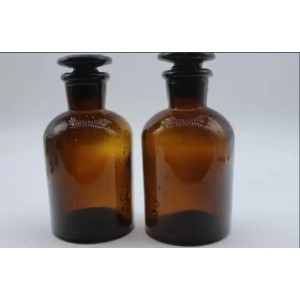文献:使用光镊雕刻和融合仿生囊泡网络
链接:https://www.nature.com/articles/s41467-018-04282-w
作者:吉多·博洛涅西马克·S·弗里丁阿里·萨利希-雷哈尼内森·E·巴洛,尼古拉斯·J·布鲁克斯,奥斯卡·塞斯尤瓦尔·埃拉尼
节选:
囊泡融合和囊泡微反应器
为了制备功能化的金纳米粒子囊泡,我们首先在含有2 wt.% 16:0 生物素帽聚乙烯 (Biotinyl Cap PE) 的0.5 M蔗糖溶液中电铸POPC囊泡。当存在荧光脂质时,其含量为1 wt.%。在钙黄绿素稀释和蛋白质表达实验中,囊泡通过乳液相转移(见上文)形成,浓度为0.5 M蔗糖/葡萄糖密度梯度。接下来,将150 nm链霉亲和素包被的金纳米粒子(Nanopartz,美国科罗拉多州;产品C11-150-TS-50;2.5 mg ml −1)以1:9的比例添加到囊泡中,将样品涡旋30分钟以促进结合。VIM的形成方法与之前相同,但外部溶液中的NaCl含量为0.25 M。通过在VIM界面上聚焦并施加150 mW(在阱处)或更高功率的激光来实现囊泡的融合。为了避免意外融合,使用小于100 mW的激光(在阱处)对囊泡进行空间操控(补充说明 13)。我们还使用了Aurora-DSG纳米粒子(AuNP标记的脂质;1-2 nm;Avanti),当其以2 wt.%的浓度嵌入膜中时,不会发生融合。

Vesicle fusion and vesicle microreactors
To prepare functionalised AuNP vesicles, we first electroformed POPC vesicles in 0.5 M sucrose solution with 2 wt.% 16:0 Biotinyl Cap PE. When fluorescent lipids were present, these were at 1 wt.%. In the calcein dilution and protein expression experiments, vesicles were formed via emulsion phase transfer (see above), with 0.5 M sucrose/glucose density gradient. Next, 150 nm streptavidin-coated AuNPs (Nanopartz, CO, USA; product C11-150-TS-50; 2.5 mg ml−1) were added to the vesicles 1:9, with the sample vortexed for 30 min to drive conjugation. VIMs were formed as before, but with 0.25 M NaCl in the external solution. Vesicles were fused by focusing and applying a laser of 150 mW (at trap) or greater on the VIM interface. Vesicles were manipulated in space using a <100 mW laser (at trap) to avoid unintentional fusion (Supplementary Note 13). We also used Aurora-DSG Nanoparticles (AuNP-labelled lipids; 1–2 nm; Avanti), which did not result in fusion when embedded in the membrane at 2 wt.%.
西安齐岳生物提供相关产品:
DSPE-PEG-Lysozyme
Stearic acid-PEG-COOH
DSPE-PEG-PLGA
DSPE-PEG-rhuMAb HER2-Fab’or scFv(二硬脂酰基磷脂酰乙醇胺-聚乙二醇-*靶向蛋白)
cRGD-PEG-N3
DSPE-PEG-Trastuzumab(二硬脂酰基磷脂酰乙醇胺-聚乙二醇-*靶向蛋白)
DSPE-PEG13-TFP
DSPE-PEG-LSLERFLRCWSDAPA(二硬脂酰基磷脂酰乙醇胺-聚乙二醇-*靶向蛋白)
DSPE-PEG-CSSRTMHHC(二硬脂酰基磷脂酰乙醇胺-聚乙二醇-*靶向蛋白)
R6H4-PEG-DSPE
以上文章内容来源各类期刊或文献,如有侵权请联系我们删除!




 齐岳微信公众号
齐岳微信公众号 官方微信
官方微信 库存查询
库存查询